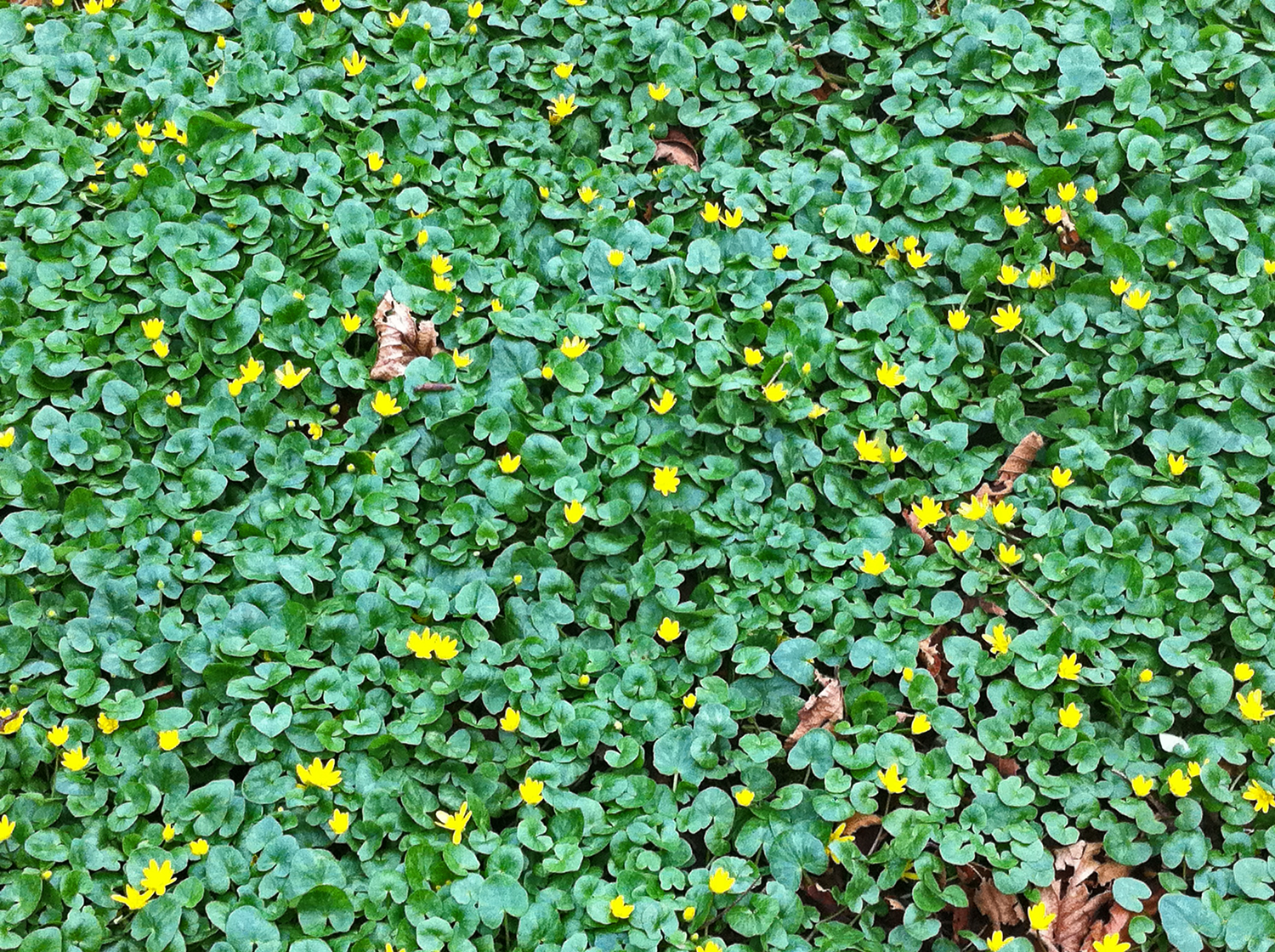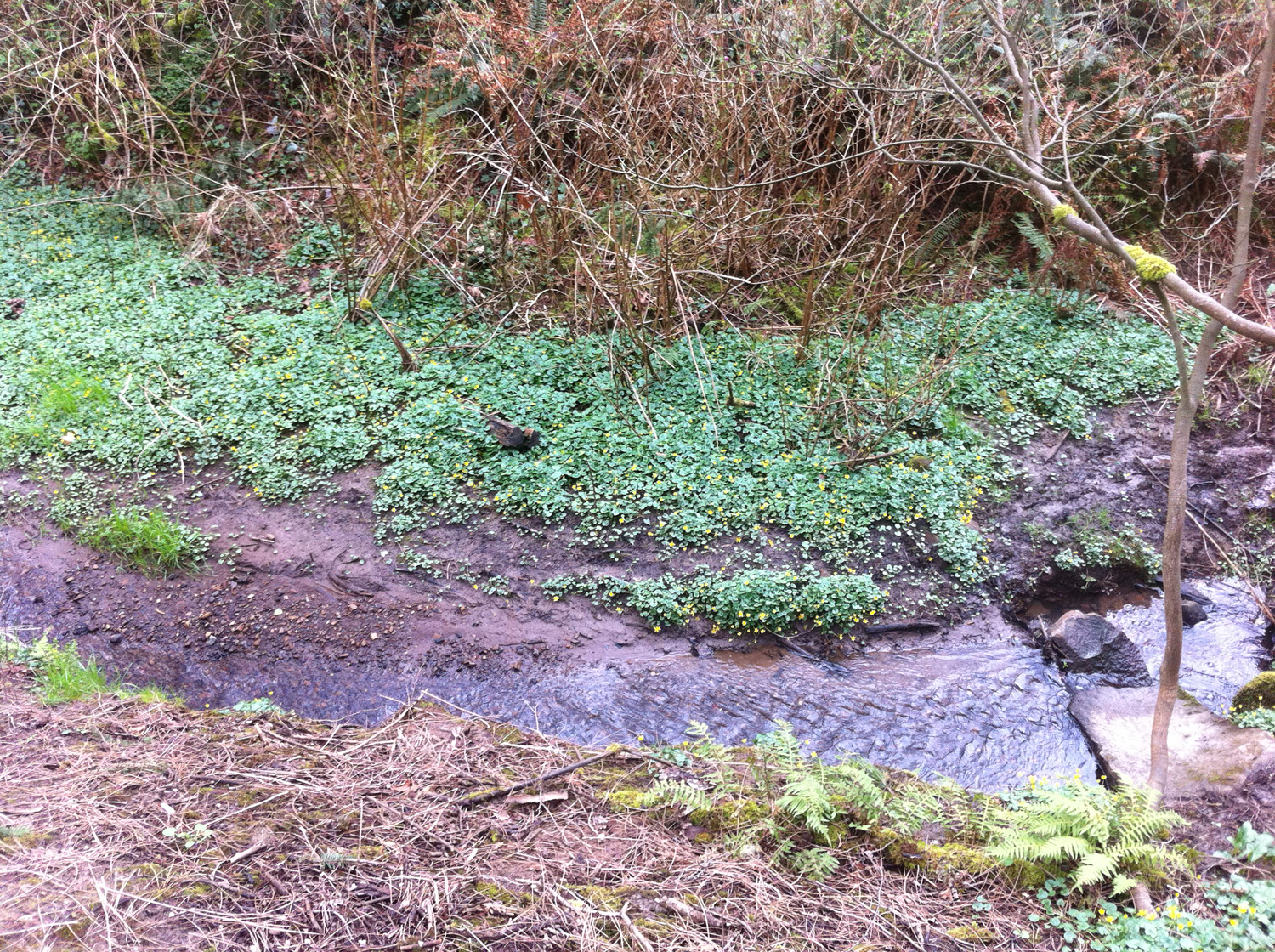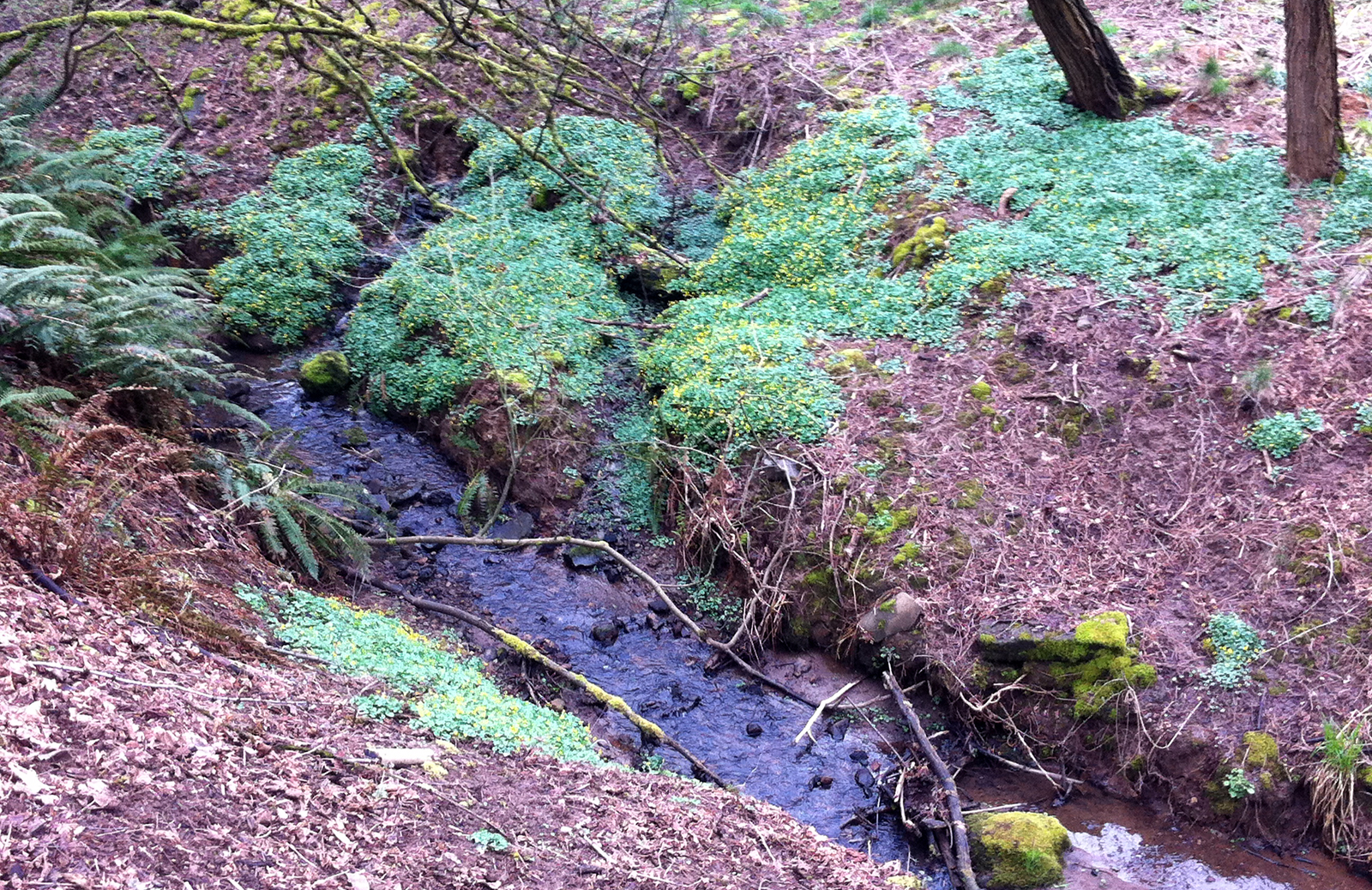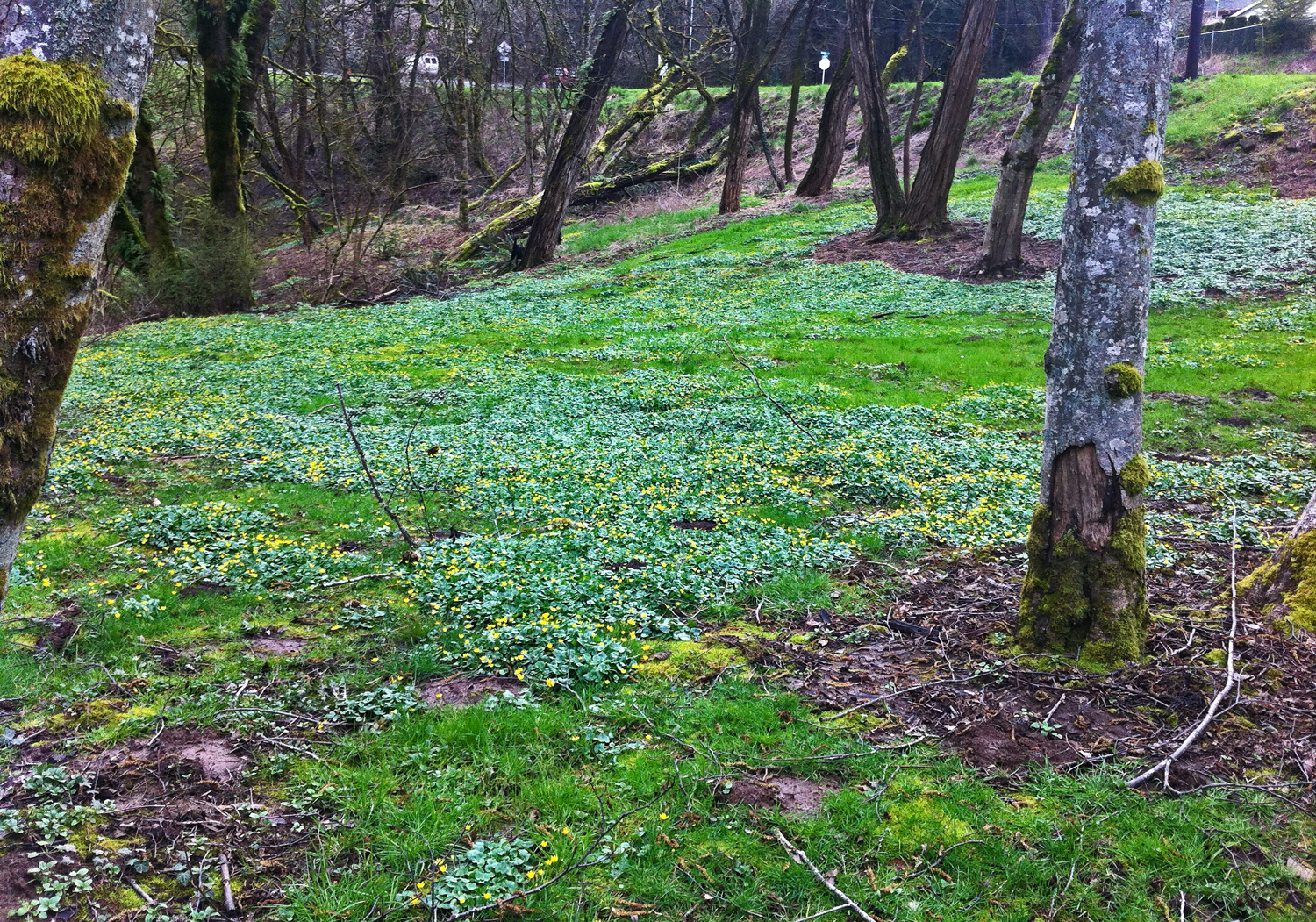Lesser Celandine (Ficaria verna) on Apr 3, 2011
Submitter does not have a specimen
EDRR Status: Local expert notified
Description of specimen
The exact species is unknown to me but appears to be a Caltha. I have not observed it elsewhere. As the pictures show it apparently spreads rapidly and is able to out-compete turf. Like the better-known Caltha palustris it sprouts rapidly and early in Spring, displays yellow flowers soon after that, and dies down fairly quickly. Also like it there is a preference for damp areas but it also adapts to drier spots as well. Plant height is a few inches rather than the near-foot of C. palustris. Blossoming time of the two is the same. There is a slight gray-green variegation to the leaves.
Note there is a well-established Robinia pseudoacacia canopy in the ravine here.






Reporter
April 3, 2011, 2:43 a.m.
Thanks so much for this report. The weed species you are seeing at Singer Creek Park is Lesser Celandine (Ranunuclus ficaria). This is species is a growing problem in the area, and this infestation is a perfect example of how fast this species can spread. I will notify Oregon City vegetation management to develop a strategy for controlling this species. Thanks again for the report. All the best,
Samuel Leininger
WeedWise Program Manager
Clackamas Soil & Water Conservation District
221 Molalla Ave. Suite 102
Oregon City, OR 97045
503-210-6006
sleininger@conservationdistrict.org
www.conservationdistrict.org
Samuel Leininger
April 13, 2011, 4:17 a.m.